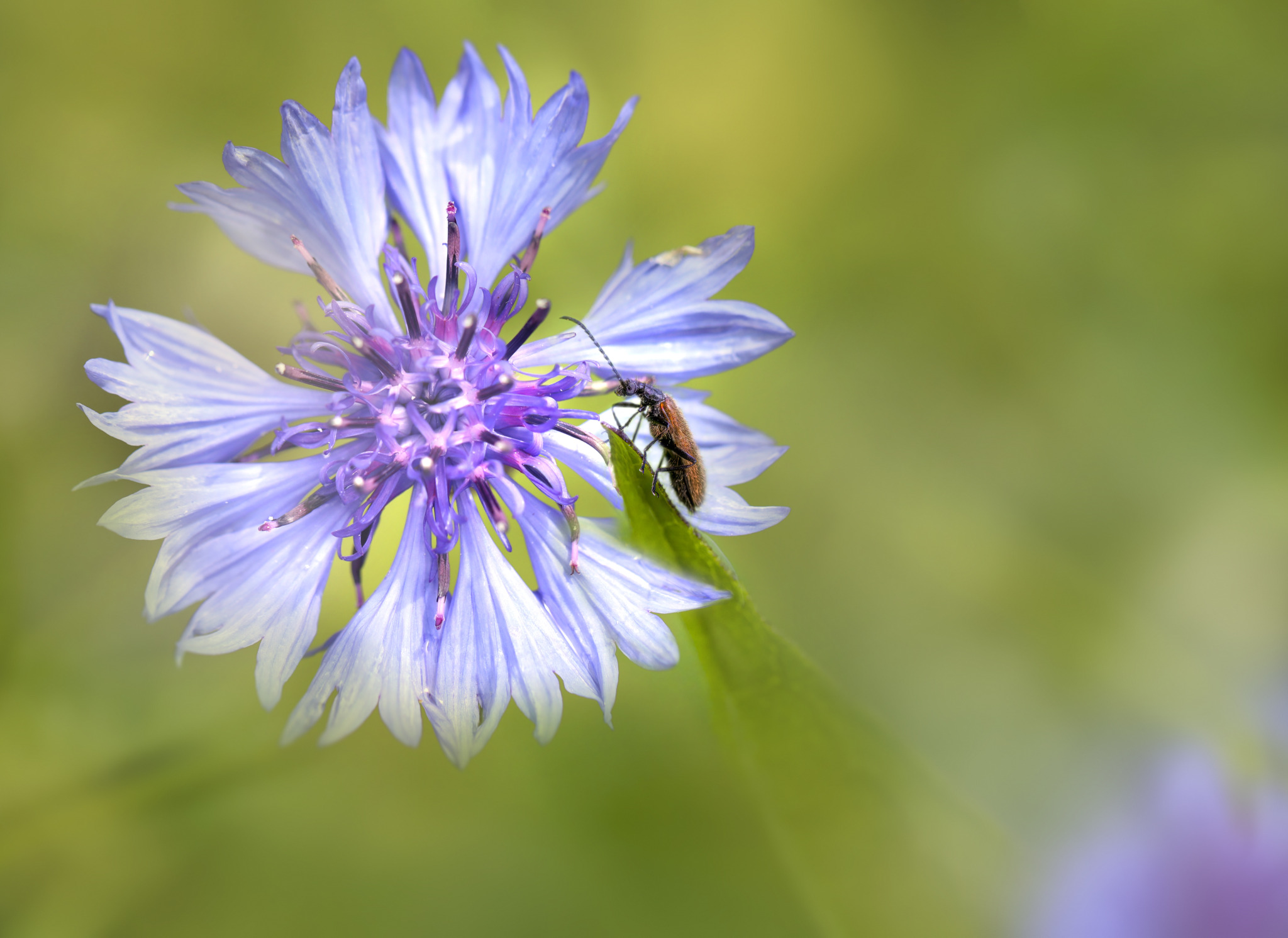Centaurea cyanus, commonly known as cornflower or bachelor’s button, is a flowering plant in the Asteraceae family. Here are some key characteristics and facts about Centaurea cyanus:
- Appearance: Cornflowers are annual plants with slender stems that can reach heights of up to 90 centimeters (about 3 feet). They have lance-shaped leaves that are gray-green in color and covered with fine hairs. The flowers are striking and typically blue, although they can also be found in shades of pink, white, and purple. Each flower head consists of numerous tubular florets surrounded by overlapping bracts.
- Habitat: Cornflowers are native to Europe, where they are commonly found in meadows, grasslands, fields, and along roadsides. They have also been introduced to other regions of the world and can sometimes be found growing as wildflowers or cultivated ornamental plants.
- Cultivation: Cornflowers are easy to grow and are often cultivated as ornamental plants in gardens and flower beds. They prefer full sun and well-drained soil and can tolerate a range of soil types. Cornflowers are typically grown from seed, either sown directly in the garden or started indoors and transplanted outdoors after the last frost.
- Uses: In addition to their ornamental value, cornflowers have several other uses. The flowers are edible and can be used to add color to salads, desserts, and other dishes. They are also used in herbal teas and traditional medicine for their purported medicinal properties, including anti-inflammatory and diuretic effects. Additionally, cornflowers have been used to produce blue and purple dyes for textiles.
- Symbolism: Cornflowers have been associated with various symbolic meanings throughout history. In some cultures, they are a symbol of love, fertility, and prosperity. In others, they are associated with remembrance and have been used as a symbol of veterans and fallen soldiers, particularly in Europe.
- Conservation: In some regions, cornflowers have declined due to changes in agricultural practices, habitat loss, and urbanization. However, they are not considered globally threatened, and efforts to conserve wild populations and restore native habitats can help ensure their survival.
Overall, Centaurea cyanus, or cornflower, is a charming and versatile plant with cultural, culinary, and ornamental significance. Its striking blue flowers and ease of cultivation make it a popular choice for gardeners and wildflower enthusiasts alike.
Visited 163 times, 21 visit(s) today
Views: 305
Subscribe to the newsletter:
